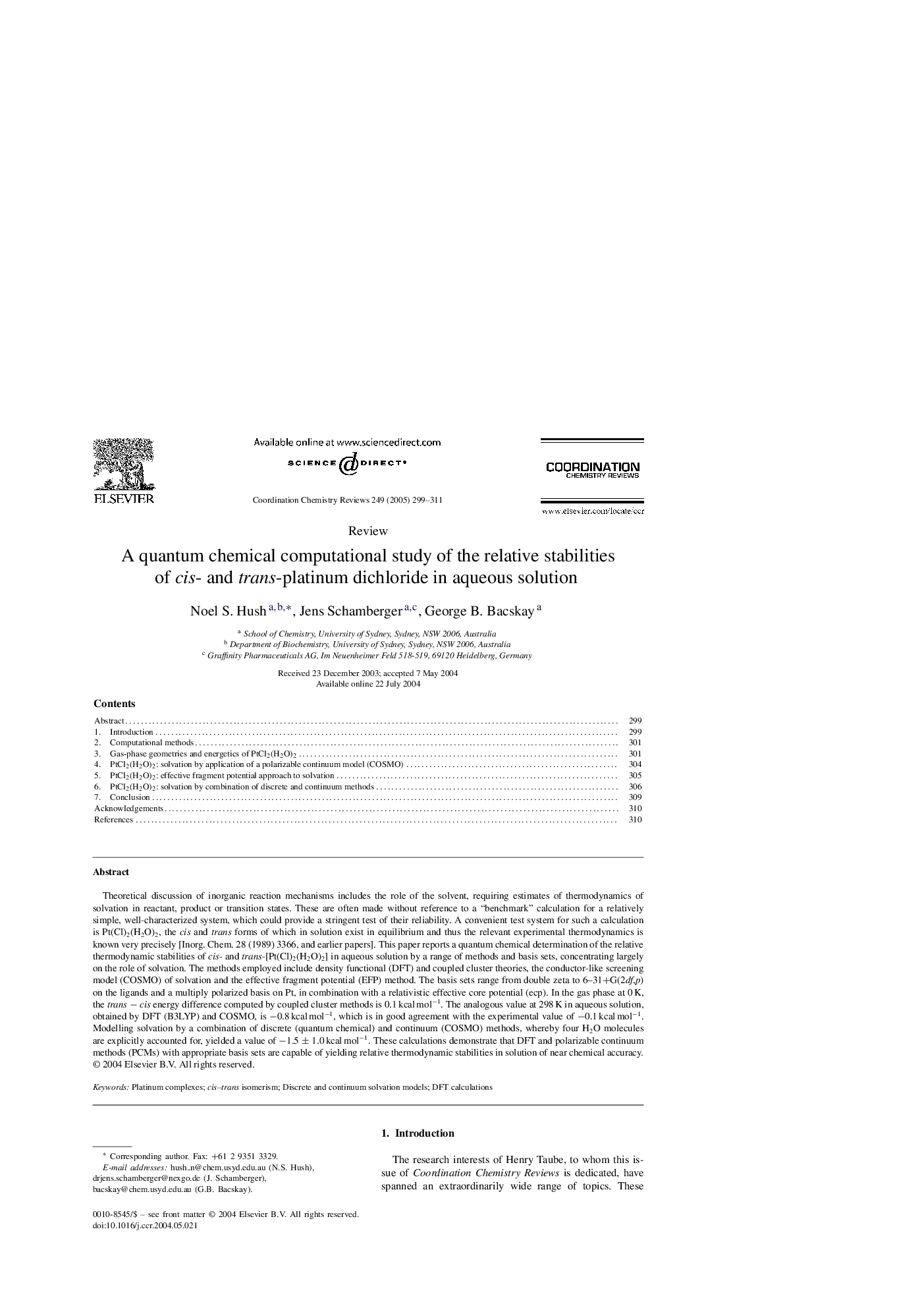| کد مقاله | کد نشریه | سال انتشار | مقاله انگلیسی | نسخه تمام متن |
|---|---|---|---|---|
| 9763754 | 1498853 | 2005 | 13 صفحه PDF | دانلود رایگان |
عنوان انگلیسی مقاله ISI
A quantum chemical computational study of the relative stabilities of cis- and trans-platinum dichloride in aqueous solution
دانلود مقاله + سفارش ترجمه
دانلود مقاله ISI انگلیسی
رایگان برای ایرانیان
موضوعات مرتبط
مهندسی و علوم پایه
شیمی
شیمی معدنی
پیش نمایش صفحه اول مقاله

چکیده انگلیسی
Theoretical discussion of inorganic reaction mechanisms includes the role of the solvent, requiring estimates of thermodynamics of solvation in reactant, product or transition states. These are often made without reference to a “benchmark” calculation for a relatively simple, well-characterized system, which could provide a stringent test of their reliability. A convenient test system for such a calculation is Pt(Cl)2(H2O)2, the cis and trans forms of which in solution exist in equilibrium and thus the relevant experimental thermodynamics is known very precisely [Inorg. Chem. 28 (1989) 3366, and earlier papers]. This paper reports a quantum chemical determination of the relative thermodynamic stabilities of cis- and trans-[Pt(Cl)2(H2O)2] in aqueous solution by a range of methods and basis sets, concentrating largely on the role of solvation. The methods employed include density functional (DFT) and coupled cluster theories, the conductor-like screening model (COSMO) of solvation and the effective fragment potential (EFP) method. The basis sets range from double zeta to 6-31+G(2df,p) on the ligands and a multiply polarized basis on Pt, in combination with a relativistic effective core potential (ecp). In the gas phase at 0 K, the trans â cis energy difference computed by coupled cluster methods is 0.1 kcal molâ1. The analogous value at 298 K in aqueous solution, obtained by DFT (B3LYP) and COSMO, is â0.8 kcal molâ1, which is in good agreement with the experimental value of â0.1 kcal molâ1. Modelling solvation by a combination of discrete (quantum chemical) and continuum (COSMO) methods, whereby four H2O molecules are explicitly accounted for, yielded a value of â1.5 ± 1.0 kcal molâ1. These calculations demonstrate that DFT and polarizable continuum methods (PCMs) with appropriate basis sets are capable of yielding relative thermodynamic stabilities in solution of near chemical accuracy.
ناشر
Database: Elsevier - ScienceDirect (ساینس دایرکت)
Journal: Coordination Chemistry Reviews - Volume 249, Issues 3â4, February 2005, Pages 299-311
Journal: Coordination Chemistry Reviews - Volume 249, Issues 3â4, February 2005, Pages 299-311
نویسندگان
Noel S. Hush, Jens Schamberger, George B. Bacskay,